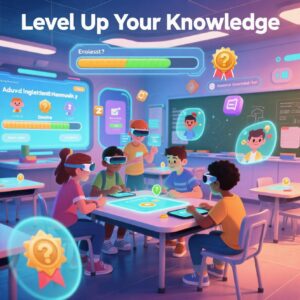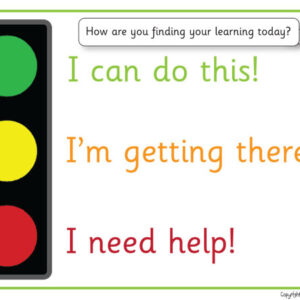Artificial Intelligence (AI) has firmly made its way into classrooms around the world, transforming how educators teach and students learn. But if you’re a teacher who’s new to AI, the thought of integrating it into your practice might feel overwhelming—or even intimidating.
The good news? You don’t need to be a tech expert to get started with AI in education. In fact, many AI tools are designed specifically to make teaching easier, more efficient, and more engaging. This beginner’s guide will walk you through everything you need to know to dip your toes into the world of AI—and help you see why it’s worth exploring.
Why Should Teachers Care About AI?
Before diving into the “how,” let’s address the “why.” Here are some compelling reasons why AI can be a game-changer for teachers:
- Personalized Learning: AI can adapt lessons to meet individual student needs, ensuring that every learner gets the support they require.
- Time-Saving Automation: From grading assignments to generating lesson plans, AI automates repetitive tasks so you can focus on what matters most—your students.
- Data-Driven Insights: AI provides actionable insights about student performance, helping you identify areas where students excel or struggle.
- Accessibility: AI-powered tools can assist students with disabilities by offering features like text-to-speech, translation, and real-time feedback.
- Engagement Boosters: Gamified AI platforms and interactive simulations can make learning fun and immersive.
Step 1: Start Small – No Coding Required!
One of the biggest misconceptions about AI is that it requires advanced technical skills. The truth is, there are countless user-friendly AI tools designed for non-tech-savvy educators. Here are a few simple ways to start incorporating AI into your classroom:
Explore Ready-to-Use Tools
There’s no need to build an AI system from scratch when there are already great options available. Some popular AI tools for teachers include:
- Grammarly: Helps students improve their writing by providing grammar, punctuation, and style suggestions.
- Khanmigo (by Khan Academy): An AI tutor that assists students with homework and offers personalized explanations.
- QuillBot: A paraphrasing tool that helps students rephrase sentences while improving clarity.
- Edpuzzle: Allows you to create interactive video lessons with AI-driven analytics to track student engagement.
- ChatGPT: Use this conversational AI to brainstorm ideas, generate worksheets, or answer questions quickly.
Try Free Trials
Many AI platforms offer free trials or basic versions at no cost. Take advantage of these opportunities to test different tools without committing financially.
Step 2: Identify Pain Points AI Can Solve
The key to successfully using AI is identifying specific challenges in your teaching workflow that technology can address. Ask yourself:
- Do I spend too much time grading quizzes and tests?
- Are my students struggling with certain concepts despite repeated explanations?
- Could my lesson planning process be more efficient?
Once you’ve pinpointed a pain point, look for an AI solution tailored to that issue. For example:
- If grading is eating up your evenings, try Gradescope, which uses AI to streamline grading for handwritten and typed assignments.
- If students need extra practice outside of class, consider Duolingo or Socratic by Google, both of which use AI to provide instant feedback and adaptive exercises.
Step 3: Learn the Basics of How AI Works
While you don’t need to become an AI expert, having a basic understanding of how it functions can boost your confidence. At its core, AI involves machines mimicking human intelligence to perform tasks like recognizing patterns, making decisions, and solving problems.
Here’s a quick breakdown of common AI terms:
- Machine Learning (ML): A subset of AI where computers “learn” from data without being explicitly programmed.
- Natural Language Processing (NLP): The ability of AI to understand and respond to human language (e.g., chatbots).
- Adaptive Learning: Systems that adjust content based on a student’s progress and performance.
Understanding these concepts will help you better appreciate what AI tools can—and can’t—do.
Step 4: Experiment and Iterate
Like any new skill, mastering AI takes time and experimentation. Don’t expect perfection right away. Instead, adopt a mindset of continuous improvement. Here’s how:
- Start with One Tool: Choose one AI tool to integrate into your routine. Once you’re comfortable, expand to others.
- Involve Your Students: Let your students explore AI alongside you. They may discover creative uses you hadn’t considered!
- Seek Feedback: Regularly ask students and colleagues for input on how well the AI tool is working—and whether it’s enhancing learning outcomes.
- Stay Flexible: Be open to tweaking your approach as you learn more about each tool’s capabilities.
Step 5: Address Ethical Concerns
As with any powerful technology, AI comes with ethical considerations. As a teacher, it’s important to model responsible use of AI. Here are a few key points to keep in mind:
- Privacy Matters: Ensure that any AI tool you use complies with privacy laws like FERPA (Family Educational Rights and Privacy Act) and doesn’t collect unnecessary student data.
- Avoid Overreliance: While AI is a helpful assistant, it should never replace the human connection between teacher and student.
- Combat Bias: Be aware that AI systems can sometimes perpetuate biases present in their training data. Double-check recommendations and outputs to ensure fairness.
Step 6: Join the Conversation
You’re not alone in navigating the world of AI in education. There’s a growing community of educators sharing tips, resources, and success stories. To stay informed and inspired:
- Follow hashtags like #AIinEducation and #EdTech on social media.
- Attend webinars or conferences focused on educational technology.
- Connect with other teachers experimenting with AI in online forums or professional networks.
Embrace the Journey
Integrating AI into your teaching practice doesn’t have to happen overnight—and it shouldn’t. By starting small, staying curious, and prioritizing your students’ needs, you’ll gradually unlock the potential of AI to enhance your classroom experience.
Remember, AI isn’t here to replace teachers—it’s here to empower them. So take a deep breath, pick one tool to try, and embark on this exciting journey. Who knows? You might just find that AI becomes your new favorite teaching partner.






